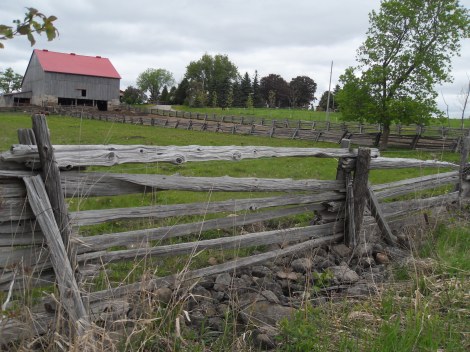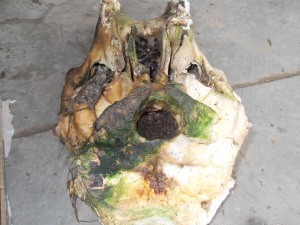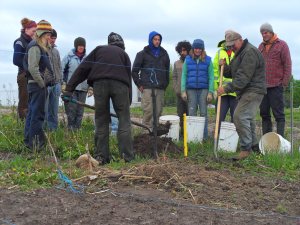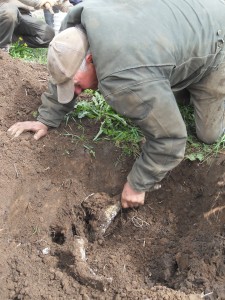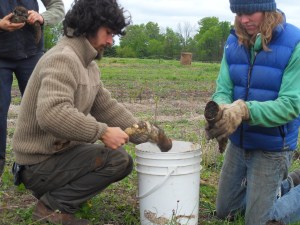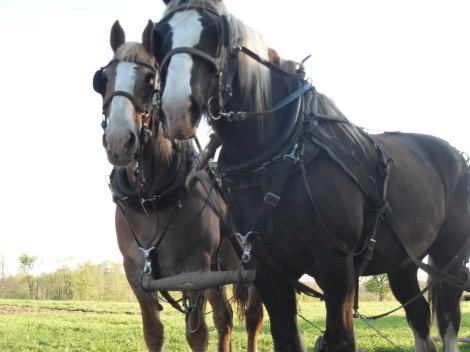In this post we are going to finish presenting the preparations we are using in biodynamic agriculture, and therefore complete a series of three post about this topic.
This day out with Johan, the manager, proved to bring light on the subject. From the preparation 500, we went to the preparation 507. We are now going to deal with the 508 : the horse tail or equisetum.
508
It is the horsetail or equisitum preparation. This preparation is not used inside the compost. It is a tea preparation which serves as a preventive to lessen the effects when conditions conducive to fungus problems exist. Horsetail tea is extracted from the common horsetail, a plant especially rich in silica. When there is a year with a lot of rain use the horsetail tea to damp down the etheric forces into the plant. Use 1,5 ounce for 2 gallons of water per acre, (100g for 20l per hectare) and stir for 20 minutes.
Barrel compost or Cow pat pit or Maria Thun’s preparation :
The use of barrel compost compensates to some degree for lack of sufficient compost onto the farm.
This preparation has been developped thanks to Maria Thun, a German lady who has been working with biodynamics her whole life. The ideal farm is to have the ideal amount of animals on the farm. Though usually you never have enough compost to put on your land every year, that’s why you put compost on the same field every three years or so. With this preparation, it enables you to spray compost on your field every year. Here the preparations are applied homeopathically. You must use fresh well formed manure from the farm.
This is the preparation we made in the afternoon. We took 5 pails of 5 gallons (20l) each filled with cow manure, 300g of egg shells and 1kg of basalt (volcanic ash). The eggs have to be raw and then dried up. Basalt has clay forming ability, ideal to get a vibrant living soil. We mix everything up for an hour and we put it in a wooden box half buried (ideally a barrel) into the ground with an open bottom. Then Johan put half of the compost into the ground, made 5 holes in a dice shape, added a tea spoon of the 502, 503, 504, 505 and 506 preparations in each holes and sprinkled some dynamised valerian on top of the layer. After that he started an other layer and did the same again. You have to wait for 4 weeks, then you come back, take the compost out, mix it and put again the preparations into the compost.
Then after 4 more weeks the barrel compost is ready to use. The preparations help the breakdown of nutrients and make them avalaible to the plants.

An other way of spraying the preparations on a bigger surface with a container at the front and at the back of a tractor
We finished the day by applying the barrel compost preparation onto the market garden. We put a ¼ of a pail (1gallon or 4l) into 35 gallons (140l) of water, we stirred the preparation for 20 minutes in a stainless steel container with a willow tree stick, and thirty people went for a walk into the field to heal the land with their pail full of dynamised preparation in one hand and the whisk in the other.
And to finish with…
